#abide sultan daughter of ahmed i
Text
Lets talk about Ümmügülsüm Sultan
There is a chance, that Kösem and Ahmed had another daughter together: Ümmügülsüm.
I am so glad, that with Anonymous sender and Ottomanladies, the truth came to light. Ottomanladies answered very long and very detailed about Ümmügülsüm, she shared her thoughts about the topic, now, here, you can find a conclusion from me:
What we know:
A privy purse register from 1622 gives the names of five unmarried princesses, who may be daughters of Ahmed, Osman II, and even Mehmed III: Umm-i Külsum(=Ümmügülsüm), Hanzade, Halime, Fatma, and Akile. Hanzade and Fatma were Kösem's daughters; Akile is possibly mistaken for Atike or Abide; Halime might be Mehmed III's daughter, named after her mother, Halime. But Ümmügülsüm was less clear.
The relazione of Angelo Alessandri from 1637 says that Murad IV had four FULL-sisters. We know three of them: Ayse, Fatma, and Hanzade. But who could be the fourth? Gevherhan was already dead, Atike was well-knownly not a full-sister and also not Abide. Maybe Ümmügülsüm?
There are some decisions and letters of Murad IV, where he mentions Ümmügülsüm as a sister of his. He uses the same wording that he used for Ayse, who undoubtedly was his full-sister, suggesting Ümmügülsüm was also a full-sister of his.
The 1638/39 harem registers mention one Ümmügülsüm Sultan who received the highest payments besides the three already known daughters of Kösem (Ayse, Fatma, Hanzade) and two daughters of Murad III. This means she could be either the daughter of Murad III or Ahmed I. But since Ahmed I's other daughter, Atike - who was not Kösem's - got a lesser stipend, if Ümmügülsüm is Ahmed I's daughter, she had to be Kösem's daughter too and so she is the fourth full-sister of Sultan Murad IV.
In 1648 the Raguzan envoy also mentions her (possibly her as they use the name Iumi), as the wife of Ahmed Pasha, governor of Herzegovina. They probably married ~1642 until the pasha's death in 1648. This was her second marriage, her first husband was one Halil Pasha, with whom she married before 1638.
In book ''Whisper of the cities'' one Ümmühan Sultan is mentioned as she met with the English ambassador's wife. Based on her, Ümmühan was said to be the aunt of deposed Mehmed IV and sister of Ibrahim I. This happened in 1690, so she still was alive then.
There are still questions:
Why no historian ever discovered this information as none of the evidence is new?
Why Ümmi is not mentioned among Ahmed I's children?
Where is she buried? *
When was she born? *
Why Ibrahim did not force her to serve Telli Hümasah (his wife) when he did it to all of the other daughters of Kösem?
To be honest the burial place of Ahmed I is quite a mess. For example there are two sarcofagies for 'Zeynep' daughters of Ahmed I. One of the sarcofagies stands for an adult woman. There was no daughter of Ahmed, called Zeynep who reached adulthood. So maybe the name is mistaken and that Ümmügülsüm. Maybe she was buried somewhere else as she lived a quite long life, survivin everyone around her and her grave is not idetified yet.
Considering the known children of Kösem and their birth date, the most possible for Ümmügülsüm is that she was born during the late reign of Ahmed I. In 1605 Kösem gave birth to Mehmed; in 1606 or 1607 to Ayse; then in 1607 or 1608 to Fatma; in 1609 to Hanzade. While I see that there is a gap here for one more child (if Kösem got pregnant extremely rapidly), she cannot be older than Fatma, as she was also not married off in 1622 yet, and also since we know quite precisely the sequence of these daughters, I do not think another one was born here but no one knows about her. It would be strange. Then in 1612, she gave birth to Murad, but between him and Hanzade there was time for another child - let it be Selim who was born in 1611 or Ümmügülsüm. Then Kasim followed Murad quite quickly, he was born in 1614, and then Ibrahim came in 1615, so there was no time for anyone else between Murad and Ibrahim. After 1615 there is another chance for the birth of Ümmügülsüm. So she either was born after Hanzade (~1611), or after Ibrahim (~1616). Either way - considering she was not just still alive in 1690, but was surely not suffering, dying since she was involved in the diplomacy meeting - she possibly died in the 1690s, she very probably reached 80 maybe even more in the end.
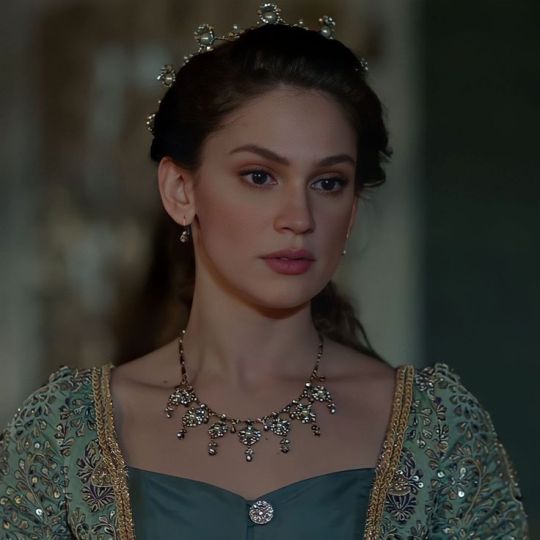
#ottoman history#ottoman empire#valide kösem sultan#mahpeyker kösem sultan#kösem#ahmed i#ümmügülsüm#ümmügülsüm sultan#ümmi#ummuhan#ummugulsum#ümmihan#ummukulsum#ümmükülsüm
16 notes
·
View notes
Photo








the known grandchildren of Handan Valide Sultan -- requested by anon
#history#historyedit#ottoman history#osman ii#sehzade mehmed son of ahmed i#ayse sultan daughter of ahmed i#fatma sultan daughter of ahmed i#gevherhan sultan daughter of ahmed i#hanzade sultan daughter of ahmed i#murad iv#sehzade bayezid son of ahmed i#sehzade huseyin son of ahmed i#sehzade kasim son of ahmed i#atike sultan daughter of ahmed i#sehzade suleyman son of ahmed i#ibrahim i#abide sultan daughter of ahmed i#ottomanladiesedit
258 notes
·
View notes
Text
Seniha Sultan (5 December 1851- 15 September 1931)
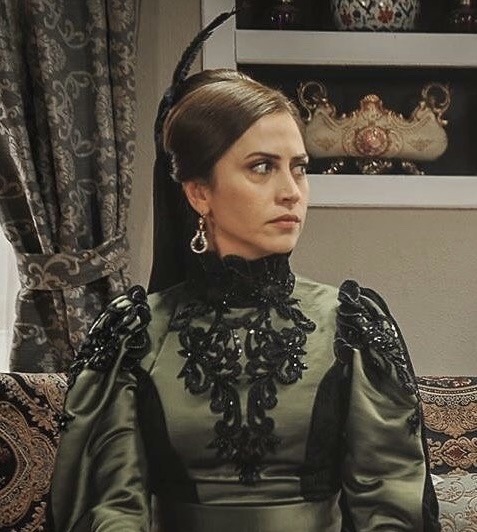
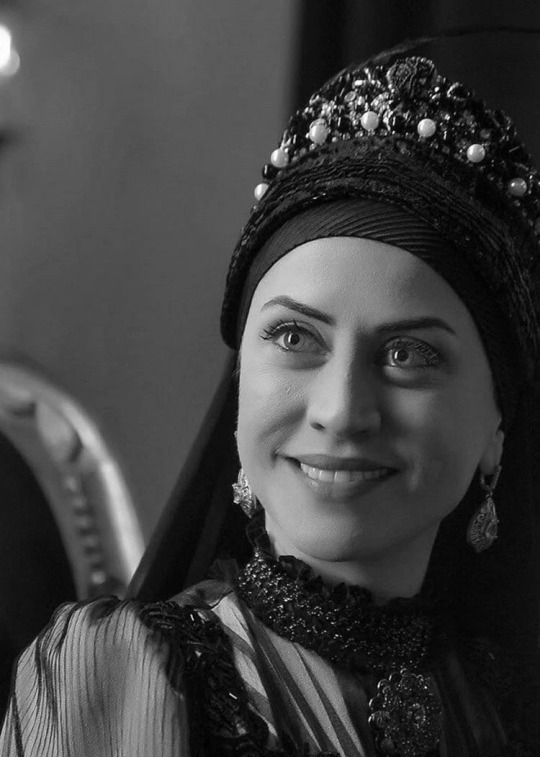
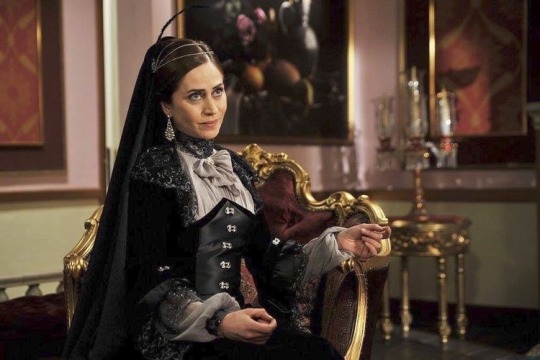
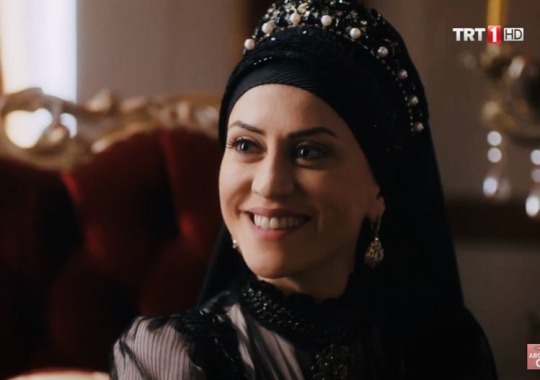
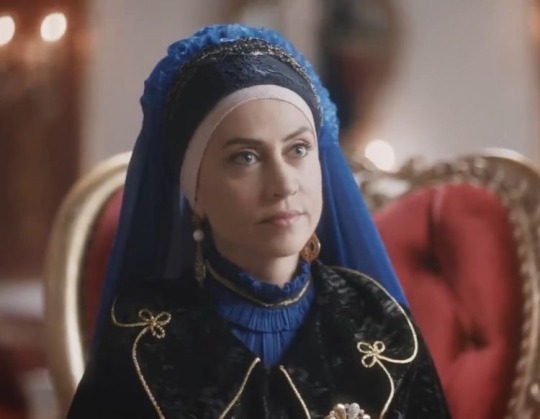
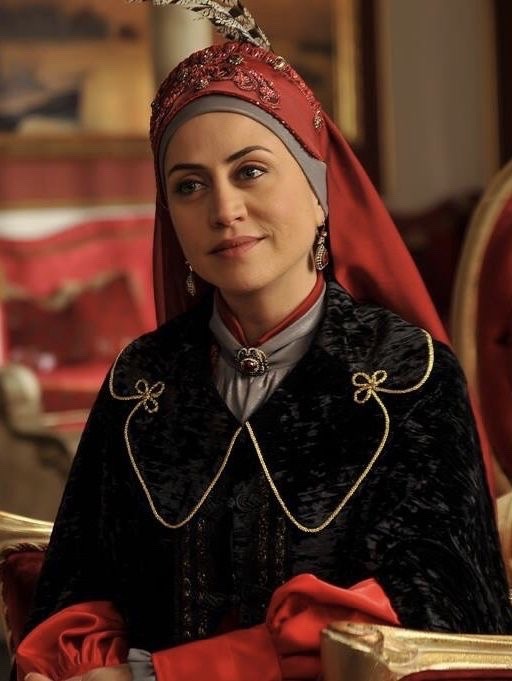


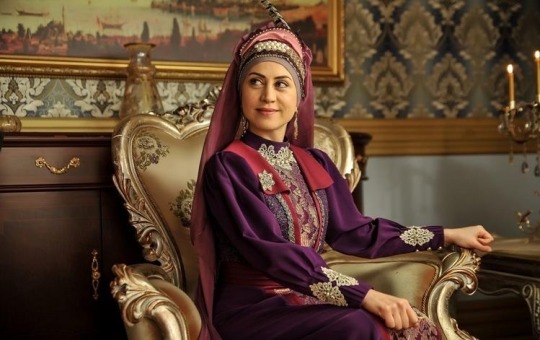
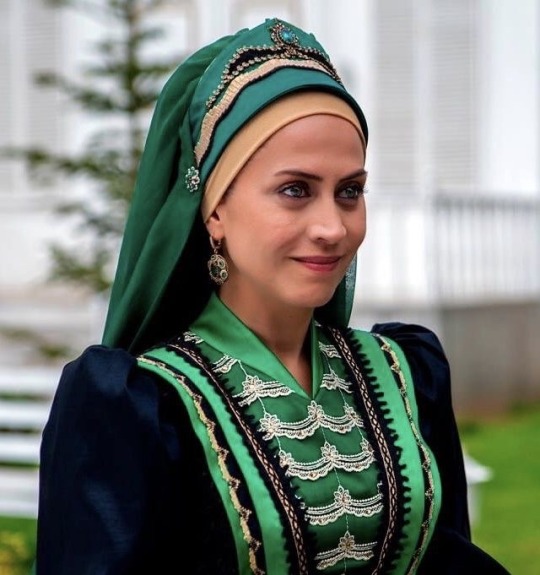
Daughter of Abdulmejid I and Nalandil Hanim
Wife of Mahmud Celaeddin Pasha
Mother of Sultanzade Sabahddin Bey and Sultanzade Ahmed Lutfullah Bey.
Sister of Sultans Murad (half), Abdul Hamid II (half), Mehmed V (half), and Mehmed VI.
Aunt of Sehzade Mehmed Selaheddin, Hatice Sultan (Murad), Fehime Sultan, Fatma Sultan (Murad), Aliye Sultan, Sehzade Mehmed Selim, Ulviye Sultan, Zekiye Sultan,Sehzade Ahmed Nuri, Naime Sultan, Sehzade Mehmed Abdulkadir, Naile Sultan, Sehzade Mehmed Burhaneddin, Sadiye Sultan, Ayse Sultan, Refia Sultan, Sehzade Abdurrahim Hayri, Hatice Sultan (Abdul Hamid II), Sehzade Ahmed Nureddin, Sehzade Mehmed Abid, Samiye Sultan, Sehzade Mehem Ziyaeddin, Sehzade Mahmid Necmeddi, Sehzade Omer Hilmi, Fenire Sultan, Ulviye Sultan (Mehmed VI), Sabiha Sultan, and Sehzade Mehmed Ertugrul.
Mother-in-law of Tabinak Hanım
7 notes
·
View notes
Photo






Ahmed I of the Ottoman Empire + daughters who survived infancy
#history#historyedit#ottoman history#ahmed i#ayse sultan daughter of ahmed i#fatma sultan daughter of ahmed i#gevherhan sultan daughter of ahmed i#hanzade sultan daughter of ahmed i#atike sultan daughter of ahmed i#abide sultan daughter of ahmed i#ottomanladiesedit#daughtersof
1K notes
·
View notes
Note
Do we know anything about Abide sultan daughter of Ahmed I after 1647? Did she have a great relation with Turhan?
No, the death of her husband in 1647 is the last piece of information there is about her.
9 notes
·
View notes
Note
If Kösem was the mother of Abide wouldn’t there have evidence to show that she was pregnant at the time that Ahmed died like “She (Kösem) was pregnant at the time of the deceased Sultan’s death”
No historian has ever suggested that Kösem was Abide Sultan’s mother so... we’re pretty sure she wasn’t and that her last child was Ibrahim.
15 notes
·
View notes
Note
Do you think Abide,Gevherhan,and Atike were the daughters of Kosem and not someone else entirely.
Maybe maybe Gevherhan but I don’t think Atike or Abide were Kösem’s daughters, no. I mean, my opinion rests on an unproved theory that Ibrahim wanted to chastise his mother through her daughters (hence why Atike and Abide were not forced to serve Hümaşah). As for Gevherhan, we don’t have a definite date of death (tradition says 1660) but if she was alive in 1648 and she was in Istanbul... well.
I have already talked about this hunch of mine here. Someday I will work on it.
#anon#ask post#ask: ottoman history#kosem sultan#gevherhan sultan daughter of ahmed i#abide sultan daughter of ahmed i#atike sultan daughter of ahmed i
16 notes
·
View notes
Note
Hello,I was just wondering how come Ibrahim’s sisters Gevherhan,Atike,and Abide served Haseki Telli Humasah Sultan,it seems strange to me,was it because they refused,Ibrahim didn’t want them to,or they were far from Istanbul during that time.
Hello! Sorry for the long wait.
It’s something that I have always wondered too, especially about Atike who is buried in his tomb, but I have never made any research on this so I might as well do it now with you.
First, let’s start with saying that those three could have not been Kösem’s daughters and maybe Ibrahim was seeking to hurt his mother by forcing Ayse, Fatma, Hanzade and Kaya Ismihan to serve his new wife. The choice of sisters (and niece) doesn’t seem random to me: Kösem’s daughters + the granddaughter that she loved so much she was like one of her children.
But let’s put that aside for a moment, now. Öztuna believes that Atike was Kasim’s twin sister and some historians that Gevherhan was one of Kosem’s daughters so maybe our first reasoning is wrong, after all.
Let’s try to find out where these princesses were, around 1648.
Gevherhan lost her second husband in 1632, when he was executed. From that year on, nothing is ever said about her. Her daughter Safiye got married in 1644 but that is no guarantee that Gevherhan was alive at that point. She is usually believed to have died around 1660, though, so maybe she just decided not to remarry. If she didn’t remarry, she could only be in the Old Palace (or maybe even in Topkapi), so she was in Istanbul in 1648... but she wasn’t forced to serve Hümaşah.
Atike lost her first husband in 1647 but he had been kubbe vizier so a part of the divan and so they had to have lived in Istanbul. She remarried in 1648 to Dâmâd Koca Sofu Kenân Paşa, who was second vizier so him too had to live in Istanbul. So... she was in Istanbul in 1648 but she wasn’t forced to serve Hümaşah either.
Abide is muddier because there is not much about her. Öztuna says she was posthumous and and that she probably died around 1648, so maybe she wasn’t alive by then. She only married once, in 1642, to vizier Küçük Musa Paşa, who died in 1647. She had no children and no other information is available about her so we’re not sure she was even alive when Ibrahim married Hümaşah. If she was, she must have been in Istanbul too, since her husband had been part of the divan.
I don’t think these three princesses refused or even could refuse; he was the sultan and his mental health was off the charts by then. If they were all alive and were all in Istanbul at that point - as we’ve found out - then it’s very curious that they were not required to serve Hümaşah... unless my hunch is true: they were not Kösem’s daughters and Ibrahim, in the end, was only trying to humiliate his mother - and only her - by forcing her blood to serve his wife.
#anon#ask post#ask: ottoman empire#ibrahim i#kosem sultan#gevherhan sultan daughter of ahmed i#atike sultan daughter of ahmed i#abide sultan daughter of ahmed i#haseki humasah sultan
27 notes
·
View notes
Note
hello! do you know anything about ahmed i lesser known daughters? atike sultan, hanzade, hatice and others what are the names and the names of their mothers? did they had important marriages or children? ayse, fatma and gevherhan had many marriages did they had any children? also what do we know about ahmed i sisters? did he had any full sisters or were they all mustafa the mad's full sisters by halime or both of them had only half sisters?
Hello!
Hanzade Sultan - Kösem’s daughter, she was born in 1608/1609, in 1623 she married Bayram Ağa, who became Bayram Paşa, but was widowed in 1638. According to Alderson, she then married Nakkaş Mustafa Paşa in 1643, but Uluçay is doubtful of this. She was one of the princesses forced to serve Humaşah. She died on 23 September 1650 and was buried in Ibrahim I’s mausoleum.
Atike Sultan - the identity of her mother and her date of birth are unknown. She married Kenan Paşa in 1633, but was widowed in 1652. In the same year she married Doğancı Yusuf Paşa, who died in 1670. Her date of death is uncertain: according to Sakaoğlu she died before 1670 but Uluçay says she died young. She was buried in Ibrahim I’s mausoleum.
Abide Sultan - she was born in the 1610s, mother unknown. She is called Ubeyde in Sicill-i Osmani. She married Küçük Musa Paşa in 1641 but was widowed in 1647. She is buried in Ahmed I’s mausoleum.
Kösem Sultan - according to Alderson, one of Ahmed’s daughters was called Kösem as well. She was born in 1605 and in 1612 she married Nasuh Paşa but died 1 month later, at 6 years old. Nasuh Paşa subsequently married Ayse Sultan.
Unnamed Sultan - according to Alderson, she was married to Şehit Ali Paşa, who died in 1624.
I don’t know of any Hatice, born to Ahmed I, sorry.
I couldn’t find any children for these princesses, but Ayşe had a son named Sultanzade Mehmed Bey, who died in 1628. Gevherhan had a daughter called Safiye Hanimsultan, born in 1630.
Ahmed’s sisters…. oh boy. We don’t have their names, unfortunately, and it’s so annoying. Mehmed III’s reign is so obscure, genealogy-wise? I hate it so much, genealogy is what interests me the most about the ottomans: who was married to whom, how many children they had, what were their names, etc etc
Anyway,
Unnamed Sultan - according to Sakaoğlu and Alderson, she was Handan’s daughter - and Ahmed’s full sister. She married Kara Davud Paşa in 1604. It’s not clear whether she was alive in 1622, during Osman II’s deposition. According to Sir Thomas Roe, Davud plotted to put his son with her on the throne instead of Mustafa.
Unnamed Sultan - she was married to Ali Paşa, who died in 1617. According to Hammer, she was actually Ahmed’s daughter and not his sister, but the Austrian ambassador said, when he met Ali Paşa in 1616: “He is a self-respecting, liberal and Christian-like person, who is 50 years old, and married to the sister of the Turkish ruler,”
Unnamed Sultan - she married Mirahur Mustafa Paşa in November 1604. According to Öztuna, her name was Hatice.
Unnamed Sultan - she married Cigalazade Sinan Paşa’s son Mahmud Bey in 1612
Unnamed Sultan - she was married to Tiryaki Hasan Paşa, who died in 1611.
Unnamed Sultan - she died in 1628
Unfortunately we don’t know the mothers to any of these princesses :(
#anon#ask post#ask: ottoman history#hanzade sultan daughter of ahmed i#atike sultan daughter of ahmed i#abide sultan daughter of ahmed i#gevherhan sultan daughter of ahmed i#safiye hanimsultan#unnamed daughters of mehmed iii#queued asks
18 notes
·
View notes
Note
Can you list some information about Abdulmecid I’s children with some information about them just like you did for Ahmed III harem + children.
Sorry for the long wait but... the guy had 42 children
Mevhibe Sultan (1840-1841), with Hoşyar Kadın: lived for only 8 months, was buried in the Hamidiye Mausoleum
Sultan V. Murad Han (1840-1904), with Şevkefza Valide Sultan: 33rd Ottoman sultan, he reigned for only 93 days, after which he was deposed on the grounds of "perpetual insanity"
Naime Sultan (1840-1843), with Tirimüjgan Kadın: Abdülhamid II's elder sister, she died of smallpox
Fatma Sultan (1840-1884), with Gülcemal Kadın: Mehmed V's eldest sister and Murad V's favourite sister. She had two husbands: Dâmâd'Alî Gaalib Paşa and Dâmâd Mehmed Nûrî Paşa, which she outlived. Her three children died in infancy and she spent the last years of her life confined in her villa in Istanbul because she had tried to reinstate Murad V on the throne. She died at the age of 44 and was buried in Murad V's mausoleum.
Behiye Sultan (1841-1847), mother unknown: she died at the age of 6 and was buried in the mausoleum of Refia Sultan. Her mother was "Her Highness, the Second Ikbal"
Neyyire Sultan (1841-1843), with Şayeste Hanım: she died at the age of 3 and was buried in the Nurosmaniye Mosque.
Refia Sultan (1842-1880), with Gülcemal Kadın: Mehmed V's elder sister. She was married to Dâmâd Mahmûd Edham Paşâ and had a daughter with him. Refia was extremely educated, like her sisters, as her father had insisted for them to be educated both in traditional and western subjects. Contrary to her younger sister Cemile, whom her father constantly lauded, Refia was a true spendthrift and her debts were staggering for just one person.
Hatice Sultan (1842-1842), with Gülcemal Kadın
Sultan II. Abdülhamid Han (1842-1918), with Tirimüjgan Kadın: 34th Ottoman Sultan, he was deposed by the Young Turks in 1909 and exiled to Thessalonika. None of his sons would ascend the throne.
Aliye Sultan (1842-1845), with Şevkefza Valide Sultan: younger sister of Murad V, she was 2 when she died and was buried in the New Mosque
Mehmed Ziyaeddin Efendi (1842-1845), with Nesrin Hanım:
Cemile Sultan (1843-1915), with Düzdidil Hanım: her mother died when she was 3, so she was raised by Rahime Perestu, future Valide Sultan. She was therefore very close to her older brother Abdülhamid II, who had been raised by Rahime Perestu as well. She married Dâmâd Mahmûd Celaleddîn Paşa in 1858, when she was fifteen. Her husband was the second son of Dâmâd Ahmed Fethî Paşa (husband of Mahmud II's daughter, Atiye Sultan) from his first wife. Fındıklı Palace was built for them. Together they had 6 children: Fethiye Hanım-Sultân (1859 - 1887), Sultân-zâde Besim Beyefendi (died at the age of 2), Sultân-zâde Sâkıb Beyefendi (1864 - 1897), Sultân-zâde Mehmed Mahmûd Celâleddîn Beyefendi (1864 - 1916), 'Ayşe Şıdıka Hanım-Sultân (1875 - 1937?), Fatma Hanım-Sultân (1879 - 1890)
Sultan V. Mehmed Reşad Han (1844-1918), with Gülcemal Kadın: 35th Ottoman Sultan, he was enthroned by the Young Turks after the deposition of Abdülhamid II and was the last sultan to die in office.
Münire Sultan (1844-1862), with Verdicenan Kadın: she firstly married the son of the Egyptian Khedive, İbrahim İlhami Paşa, and the costly wedding ceremony attracted a lot of criticism because the Imperial Army had just been defeated in Montenegro. The marriage lasted only two years, as İbrahim İlhami Paşa died at only 24 years old. She therefore married Lieutenant General Dâmâd İbrahim Paşa, with whom she had a son: Sultân-zâde 'Alâeddîn Beyefendi (1861 - 1915?). She was buried in the mausoleum of her great-grandmother, Nakşıdil Valide Sultan.
Samiye Sultan (1845-1845), mother unknown: she was buried in the New Mosque. Her mother had been listed as "Her Highness, the Third Kadinefendi"
Ahmed Efendi (1846-1846), with Nükhetseza Hanım: he was buried in the New Mosque inside the mausoleum of Refia Sultan
Fatma Nazime Sultan (1847-1847), mother unknown: she was buried in the mausoleum of Refia Sultan
Sabiha Sultan (1848-1849), with Mehtab Kadın: she was buried in the mausoleum of Refia Sultan
Mehmed Abid Efendi (1848-1848), with Tirimüjgan Kadın: he was buried in the mausoleum of Refia Sultan
Ahmed Kemaleddin Efendi (1848-1905), with Verdicenan Kadın: he was a supporter of Murad V's rights to the throne and was in a bad relationship with her other older brother, Abdulhamid II. He married his only consort, Fatma Sezâ-dil Hanımefendi, in 1876, and had two daughters with her: Atiyetullah Sultan (1878-1878) and Münire Sultan (1880-1939). His daughter married Dâmâd Mehmed Sâlih Paşa in 1907 and had a son, Sultân-zâde Ahmed Kemâleddîn (Keredin) Beyefendi (1908-1987), clearly named after her father.
Atiyetullah Efendi (?-?)
Mehmed Fuad Efendi (died in infancy), with Nergizu Hanım: he was buried in the mausoleum of Refia Sultan
Behice Sultan (1848-1876), with Nesrin Hanım: she lost her mother at the age of 3 and contracted tuberculosis in childhood. She lived secluded all her life and her sisters Refia and Seniha always sent her letters to cheer her up, even though they knew that Behice's illness had reached the final stage by the time she had turned 20. In her letters, Behice came across as frustrated, jealous of her sisters' freedom and extremely sensitive. Her dowry had been prepared by her father but her illness always prevented her from getting married, even though that was her dream. Finally, her uncle Abdülaziz consented, and Behice married Dâmâd Halil Hamîd Beyefendi on 16 November 1876. Unfortunately, the princess died just 20 days later at the age of 28. She was buried in the mausoleum of Münire Sultan.
Mehmed Burhaneddin Efendi (1849-1876), with Nükhetseza Hanım: he was Abdülhamîd II's favourite brother, who also named a warship after him. He had two consorts: Mest-i Niyâz Hanımefendi and Şâd-rûy Hanımefendi. From his first consort, he had an unnamed daughter (1876? -1890?) and Ibrahim Tevfik Efendi (1874-1931). He was buried in the mausoleum of his father Abdülmecid
Rukiye Sultan (1850-1850), with Gülcemal Kadın:
Mukbile Sultan (1850-1850), mother unknown: buried in the mausoleum of Refia Sultan, her mother had been listed as "Her Highness, the Fourth Ikbal"
Mehmed Vamık Efendi (1850-1850), mother unknown: buried in the mausoleum of Refia Sultan
Nizameddin Efendi (1850-1853), with Nesrin Hanım: twin of Bahaeddin Efendi, he was buried in the mausoleum of Murad V
Bahaeddin Efendi (1850-1852), with Nesrin Hanım: twin of Nizameddin Efendi, he was buried in the mausoleum of Refia Sultan
Ahmed Nureddin Efendi (1852-1885), with Mehtab Kadın: he had two consorts, Nazlı Emşâl Hanımefendi and an unnamed one, but no children. He died at the age of 33 and was buried in the mausoleum of Murad V
Mehmed Rüşdü Efendi (1852-1852), with Ceylanyar Hanım: buried in the Hamidiye Tomb.
Osman Safiyeddin Efendi (1852-1855), with Ayşe Serfiraz Hanım: buried in the mausoleum of Abdülmecid I
Seniha Sultan (1853-1931), with Nalandil Hanım: she married Dâmâd Âsaf Mahmûd Celaleddîn Paşa (the son of Dâmâd Halil Rifat Paşa after the death of Saliha Sultan, daughter of Mahmud II) in 1877. Celaleddîn Paşa wasn't particularly trusted by Abdülhamid II but was nevertheless appointed vizier. Seniha and her husband participated in the Ali Suavi Incident, actually a conspiracy to dethrone Abdulhamid II and re-instate Murad V, the failure of which - among other things - prompted Celaleddîn Paşa to leave the Ottoman empire and settle in Bruxelles. Together, they had two sons: Sultân-zâde Mehmed Sabâhaddîn Beyefendi (1877-1948) and Sultân-zâde Ahmed Lutfullâh Beyfendi (1880-1973). Her son Sabâhaddîn was a vocal critic of Abdülhamid II's regime and was actually the leader of a faction inside the Young Turks movement which advocated some of the same liberal principles of the CUP but instead favoured administrative decentralization and European assistance. At the time of the Dynasty's exile from Turkey, Seniha Sultan was the eldest princess alive. She lived with Mehmed VI in Sanremo until his death, then moved to Nice, where the last Caliph Abdülmecid II had settled down but was not in favour because she was part of the "Mecid branch" of the family. She spent her last years bedridden in a room inside the caliph's villa and Nice and died there in 1931. She was buried in the Sultan Selim Mosque in Damascus.
Abdullah Efendi (1853-1853), with Şayeste Hanım: stillborn
Mehmed Abdüssamed Efendi (1853-1855), with Nalandil Hanım: buried in the mausoleum of his father
Zekiye Sultan (1855-1856), with Gülistu Kadın: twin of Fehime Sultan, was buried in the mausoleum of Münîre Sultân
Fehime Sultan (1855-1856), with Gülistu Kadın: twin of Fehime Sultan, was buried in the mausoleum of Münîre Sultân
Mediha Sultan (1856-1928), with Gülistu Kadın: elder sister of Mehmed VI, she fell in love with the son of Sâmi Paşa and started corresponding with him. When Abdülhamid II found out, he sent Necib Bey at the embassy in Paris. Mediha was devastated: she would not drink, eat or sleep. Her step-mother Verdicenan asked Rahime Perestu Valide Sultan's help, and together they were able to convince Abdülhamid to let the princess marry Necib Bey, which she did in 1879. Mediha had a son with him, Sultân-zâde 'Abdurrahmân Sâmî Beyefendi (1880-1961), but her happiness was short-lived: her husband died in 1885 at the age of 29. In 1886, she married her second husband, Dâmâd Mehmed Ferîd Paşa, but had no children with him.
Naile Sultan (1856-1882), with Şayeste Hanım: she married Dâmâd Çerkes Kabasakâl Mehmed Paşa who, according to Ayşe Osmanoğlu, was a brother of Abdülhamid II's consort Bidar Kadın. They had no children. She was buried in the mausoleum of Murad V
Bedia Sultan (1857-1858), with Ayşe Serfiraz Hanım: she was buried in the mausoleum of Münîre Sultân.
Selim Süleyman Efendi (1860-1909), with Ayşe Serfiraz Hanım: he had 5 consorts: Filiz-san Hanımefendi, Emîne Câvidân Hanımefendi, Fatma ikbâl Hanımefendi, 'Ayşe Tarz-ı ter (Tarz-ender) Hanımefendi and Zât-ı Melek Hanımefendi. His children were: Mehmed 'Abdülhalîm Efendi (1894-1926), Emine Naciye Sultan (1896-1961), and Damad Mehmed Şerefeddin Efendi (1904-1966)
Sultan VI. Mehmed Vahideddin Han (1861-1926), with Gülistu Kadın: last sultan of the Ottoman Empire, he was deposed in 1922 when the Republic of Turkey was proclaimed and exiled in 1924. He died in Sanremo, Italy
#anon#ask post#ask: ottoman history#abdulmecid i#murad v#abdulhamid ii#mehmed v#mehmed vi#fatma sultan daughter of abdulmecid i#refia sultan daughter of abdulmecid i#cemile sultan daughter of abdulmecid i#munire sultan daughter of abdulmecid i#sehzade ahmed kemaleddin son of abdulmecid i#behice sultan daughter of abdulmecid i#sehzade mehmed burhaneddin son of abdulmecid i#seniha sultan daughter of abdulmecid i#mediha sultan daughter of abdulmecid i#naile sultan daughter of abdulmecid i#sehzade selim suleyman son of abdulmecid i
21 notes
·
View notes
Text
The daughters of Mehmed III
As it is known, Mehmed III's reign is quite obscure when we talk about his family: his consorts were overshadowed by Safiye Sultan and of his daughters we don't even know their names.
However, recently I have encountered some bits of information about Mehmed III's daughters that got me thinking:
“A privy purse register from 1622 gives the names of five unmarried princesses, who may be daughters of Ahmed, Osman II, and even Mehmed III: Umm-i Külsum, Hanzade, Halime, Fatma, and Akile.” – Baki Tezcan, Searching for Osman: A Reassessment of the Deposition of the Ottoman Sultan Osman II (1618-1622)
So, Hanzade and Fatma are Ahmed I's daughters as Hanzade was married in 1623 and Fatma in 1624. Umm-i Külsum is a different transliteration of Ümmügülsüm, but this is everything I have to say about this princess; the next Ümmügülsüm Sultan was a daughter of Ibrahim's but it is not clear whether he had a connection with this first princess or not.
On the contrary, the other two princesses - Halime and Akile - have very interesting names: neither names are dynastic, which would prompt me to say that they had a meaning to the sultan whose daughters they were. I am very big champion of this because dynastic names are common in any royal house and usually variations mean that this or that child was named in honour of someone else. I could give you clear examples of this but I do not want to blab too much.
Could Halime Sultan be a daughter of Mehmed III's? My first thought was that it's the name of one of his daughters with Halime Sultan, clearly, but I don't think she was (unless Halime had more than two daughters, of course): neither of Halime's daughters were unmarried in 1622. One of them had already been dead, as her husband had remarried in 1620, and the other was still married to Kara Davud Paşa. Among Ahmed I’s daughters who died little, Öztuna does not mention a Halime Sultan (they’re Zahide, Esma, Hatice and Zeyneb), so I don’t think she was one of his daughters but rather one of his sisters. As for Osman II, we have information only on one daughter, Zeyneb Sultan, who died in infancy.
The other princess, Akile, could be a mistake in writing Atike or Abide, Ahmed I’s daughters, who were both unmarried at the time. I know it sounds fishy but Peirce has noted that mistakes were quite frequently in harem records. If we consider Akile one of Ahmed I’s daughters, maybe Umm-i Külsum could have been a second name of either Atike or Abide. Atike is usually called Burnaz Atike so the one with a second name could have been Abide.
At the same time the name Akile is very interesting because it was the name of Osman II's legal wife, Akile Hatun. While Peirce says that the marriage was unconsummated, the Venetian ambassador Giustinian says that Akile had apartments in the Old Palace and it was there that Osman II went for the consummation. Öztuna says that she was mother to twins Şehzade Mustafa (1622-1623) and Zeynep Sultan (1622-1623?); Akile may have been a second name of Zeynep Sultan or another child altogether.
"A document dated 15 N 1014/24 January 1606 refers to a certain Şah Sultan as the sister of Ahmed; [...] Şah Sultan may be a third daughter of Mehmed III, as married princesses are usually referred to with the name of their husbands [...]; but she may also be the wife of Davud Pasha, as their marriage was not yet consummated at this point." – Baki Tezcan, Searching for Osman: A Reassessment of the Deposition of the Ottoman Sultan Osman II (1618-1622)
This is a very important piece of information: one of Ahmed I's sisters was called Şah. Unfortunately, we don't know if she was Davud's wife, so Halime's daughter, or another princess altogether. The date of the document is frustrating, because the marriage between Mehmed III's daughter and Kara Davud Paşa was consummated only in March 1606. In any case, one of Mehmed III’s daughters was called Şah Sultan.
“S'attrova anco il re diverse sorelle da marito, et molte di più zie" // "The king [Ahmed I] likewise has found himself with several sisters of marriageable age, and even more aunts" – Ottaviano Bon, 1609
Again, very interesting. Ottaviano Bon talks of "several sisters" all adults or at least teenagers. Several doesn't mean one or two but a larger number. About his aunts, we know that Murad III had a lot of children so that is not surprising. What is surprising is the large number of sisters Ahmed I seems to have had.
"Ha tre figliuoli maschi e una femmina: questa di età di 18 anni ed ha discorso con alcuni bascià che la pretendono per moglie, come Mahmud, e il bascià del Cairo, ma non si mariterà se prima non si fa il ritaglio del primogenito, [...] tutti questi sono di una madre, e l'ultimo che ha 3 o 4 anni ha nome Osmano." // "He [Mehmed III] has three sons and a daughter: she is 18 years old, and [Mehmed III] has talked with some pashas who want her as wife, like Mahmud and the pasha of Il Cairo, but she won't get married until the firstborn son is circumcised, [...] all of them are from the same mother, and the last [son] who is 3 or 4 years old is named Osman" – 8 June 1600, Agostino Nani
I have included this bit for the sake of being thorough. I am not sure that Nani's information is accurate because in other parts of his report he says that Ahmed was the eldest son and that Mahmud was his full-brother. Also, this Prince Osman… we have never heard of him? Though of course he could be right and we simply don't have information on every single child of Mehmed III's. What is interesting here is that the princess is probably Mehmed III's eldest child because she was born in the same year of his circumcision. Now, Donà says that his first children were all by the same woman (ie. Handan Sultan); if he did not make a mistake, Mehmed III's eldest daughter was also Ahmed I's elder sister (I doubt that Mehmed had had another child before this daughter because the timeline is very tight as it is, if Donà is right and his only children born when he was a prince were all by Handan Sultan)
To all of this (and to make matters even more complicated) I'd add:
Öztuna says, in Dynasties, that Mirahur Mustafa Paşa's wife was called Hatice.
Now, Mirahur Mustafa Paşa's wife went on to marry Cigalazade Sinan Paşa’s son Mahmud Bey in 1612, and died before 1620, the date of Mahmud Bey's second wedding. About her we also know that, according to Tezcan, she was a daughter of Halime so it seems that one of Mehmed III and Halime Sultan’s daughters was called Hatice.
"Ayşe S., f. Mehmed III Türbe de Destârî Mustafa Pacha, son époux" – found in Juliette Dumas, The Perles de Nacre du Sultanat (actual source: Vatin et Yerasimos, Les cimetières dans la ville : 164-166 notice 422.)
I checked and Destari Mustafa Paşa was indeed a vizier of Mehmed III's and is sometimes referred to as "Damad". M. Orhan Bayrak clearly states in İstanbul'da gömülü meşhur adamlar: VIII. yüzyıl-1998 that he was a Damad of Mehmed III's and Ayşe Sultan's husband. Dumas adds that their children were buried in the same mausoleum so it was not a marriage between a child and a grown man. Mustafa Paşa died in 1610 and his wife was laid to rest next to him but we don't know when she died. That they were already married during Mehmed III's reign makes me think that she must have been already a teenager at the time and so I'd venture and say that she was one of Handan's daughters (maybe the one Nani talked about?). In any case, an Ayşe Sultan daughter of Mehmed III existed indeed.
To wrap this very long post up:
One of Mehmed III's daughters with Halime was - most probably - called Hatice
Another princess was called Şah Sultan
Destari Mustafa Paşa's wife and Mehmed III's daughter was called Ayşe Sultan and could have been a daughter of Handan's
Mehmed III had more than four daughters (two by Handan and two by Halime), as one of Ahmed I’s first problems were his sisters’ marriages.
#history#ottoman history#text post#mehmed iii#unnamed daughters of mehmed iii#handan sultan#halime sultan
68 notes
·
View notes
Note
What do you think about it: According historian Mustafa Naima was year of birth of ayse 1608 not 1605. But historian said that in year 1605 had kosem sultan daughter. so it is true that how said historian mustafa Naima that was ayse born in 1608 so kosem hanim sultan daughter kosem sultan can be exist. because it is really interestive that she to let married first Kosem for this pasha and than ayse . or she had in 1605 another unamed daughter but it was not kosem and not ayse !?
Alderson, Öztuna, Uluçay (though his source is Alderson) and Sakaoğlu all claim that Ayşe was born in 1605. It’s Naima who says that she was 3 when she married Nasuh Paşa, therefore moving her birth to 1608.
I personally do not believe in a Princess Kösem Sultan. I do not know what is Alderson’s source, because he claims that neither Princess Kösem and Princess Ayşe actually married Nasuh Paşa, which is not true because the wedding ceremony was performed and several ambassadors refer to Nasuh Paşa as Kösem’s son-in-law. It was known that Kösem was working with him to bolster Mehmed’s candidacy to the throne.
(Sakaoğlu mentions her but repeats what Alderson said and seems dubious about her existence)
Also, her name is quite strange. It is not a dynastic name, which Ahmed I seemed to prefer, Uluçay - who relied a lot on Alderson - did not believe it for one second and not even Öztuna, who is sometimes quite creative, mentions a Princess Kösem. It is possible that it was a second name? I really don’t know.
It is impossible to ascribe other children, who died in infancy for example, to Kösem without a piece of evidence.
Do we know something about children fatma hatun wife ahmed 1. please could you for me something found about her children. on internet pages are her children- in one theori gevherhan born 1605, chihangie, hasan, abide (1618 nebo podle historika 1610) a dcera narozená v roce 1618 po smrti ahmeda. Accoring Ambassador her two were named daugher Abide, gevherhan. Ambassador said that she had sons and last children girl was born after death his father 1618. it is all true. we have some information?
We’re almost sure that Gevherhan was Osman II’s sister, so Mahfiruze’s daughter. Börekçi says that Gevherhan was Ahmed I’s eldest daughter but gives no source for this claim.
I really don’t know where you all find all this information about “Fatma” because the only time I encountered her was when reading “Histoire d’Osman, premier du nom, XIX empereur des Turcs, et de l’impératrice Aphendina Ashada”, which is really not a work of historiography.
I can’t ascribe children to a person I don’t even believe existed
thanks for all you answer by the way you really help me. because I study on internet ottoman empire. and I need another opinion. thank you again. I hope so that my english is god. Do we know something about mother orhan and selim. I found on internet pages about orhan and selim that they are children kosem too. can be posible that orhan born 1609 and handzade 1609 are twins too like atike and kasim? handzade and orhan like twin is only my opinion? what do you think abou it
you’re welcome, but please do not study Ottoman history on the internet. It’s the worst place you could have chosen.
I don’t have a date of birth for Şehzâde Orhan. Şehzâde Selim was born in 1611 and died a couple of months later so biologically, he could have been Kösem’s child because there’s a “jump” between Hanzade being born in 1609 and Murad IV being born in 1612. This of course doesn’t mean that she had more children in the meantime, maybe she was just sick or just did not conceive or Ahmed was busy with another consort, who knows. Theoretically, there is space for another child between Hanzade and Murad.
Theoretically. It’s not proven.
I don’t believe Öztuna when he says that Atike and Kasim were twins because I think it would have been more well-known had it been true. Also, no historian has ever ascribed Atike Sultan to Kösem.
who historians said that handzade is daughter kosem. could you please send me name this historians. I known that it was pierce anybody else? Are there also some historians who didn´t belived that handzade is not daughter kosem sultan? but now I trusth you that handzade is daughter kosem!!!
Well, that Hanzade is Kösem’s daughter seems to me (and to Peirce as well, apparently) very clear: she got married right after Murad IV’s accession to the throne (why not before? because she was not Osman II’s sister and therefore not useful to him. On the other hand, Gevherhan got married during his reign), she married one of the key men who had laboured for Murad IV’s enthronement, she was one of the princesses whom Ibrahim subjected to the humiliation of serving Hümaşah (all the other princesses - Ayşe, Fatma and Kaya Ismihan - had something in common: they were related to Kösem and Kösem only. That Hanzade was in this group - in my opinion - is proof that she too was related to Kösem, hence she was her daughter)
Uluçay and Sakaoğlu did not give information about the princesses’ mothers except for Ayşe Sultan, who is given as Kösem’s daughter by everyone. As of today, I have not found one historian who contested the maternity of Hanzade Sultan as given by Peirce; of course she makes mistakes too (I still don’t understand how she did not understand that Mehmed was Kösem’s son when the evidence is /right there/) but I have never seen Hanzade ascribed to another woman.
#anon#ask post#ask: ottoman history#ayse sultan daughter of ahmed i#kosem sultan#hanzade sultan daughter of ahmed i#gevherhan sultan daughter of ahmed i
20 notes
·
View notes
Note
what about children thrid wife ahmed I fatma sultan. She had 5 children her children propably are 1605 gevherhan- the very first daughter of ahmeda. someone people on internet say. that gevherhan born in 1608 like daughter kosem but I cannot find no proof, that gevherhan is daughter kosem . Then is her daughter abide born 1618 like youngest daughter ahmed died 1648. it is true. According my research are they sons hasan and chihangir. What about fifth children it posiblimente that it is zahide ?
I have never found proof of this consort’s existence.
10 notes
·
View notes
Text
On this day, 3 October, in Ottoman history:
3 October 1843 - birth of Seniye Hanımsultan: daughter of Atiye Sultan (daughter of Mahmud II) and Rodosluzâde Dâmâd Ahmed Fethî Paşa, she was born in Kuruçeşme Palace. She married Hüseyin Hüsnî Paşa (son of Sırkâtibi-zâde Mustafa Paşa) in October 1859. Seniye Hanımsultan died on 10 December 1910 and was buried in the mausoleum of her grandfather, Mahmud II.
3 October 1852 - death of Tîr-i Müjgân Kadın: Third Imperial Consort of Sultan Abdülmecid and mother of Abdülhamid II, she was a Circassian from the Şapsığ clan. Her father was Bekhan Bey and her mother was Almaş Hanım; nothing else is known about her family. Since she was not aristocratic, it is possible that she had been given to palace service at a young age as a gift; nevertheless, Sultan Abdülmecid noticed her in 1840 and wanted to marry her. "[S]he had hazel green eyes, quite long, light brown hair, white, translucent skin, and a slender figure, thin waist, and lovely hands and feet", according to her granddaughter Ayşe. Tir-i Müjgan Kadınefendi gave birth to Naime Sultan in 1840, to the future Abdülhamid II in 1842 and to Prince Mehmed Abid in 1848. Both Naime Sultan and Mehmed Abid died in infancy. Tir-i Müjgan Kadın fell sick, maybe of tuberculosis, and died on 3 October 1852. She was buried in the New Mosque.
#history#ottoman history#on this day in history#on this day in ottoman history#seniye hanimsultan daughter of atiye sultan#atiye sultan daughter of mahmud ii#tirimujgan kadin#late ottoman empire
12 notes
·
View notes